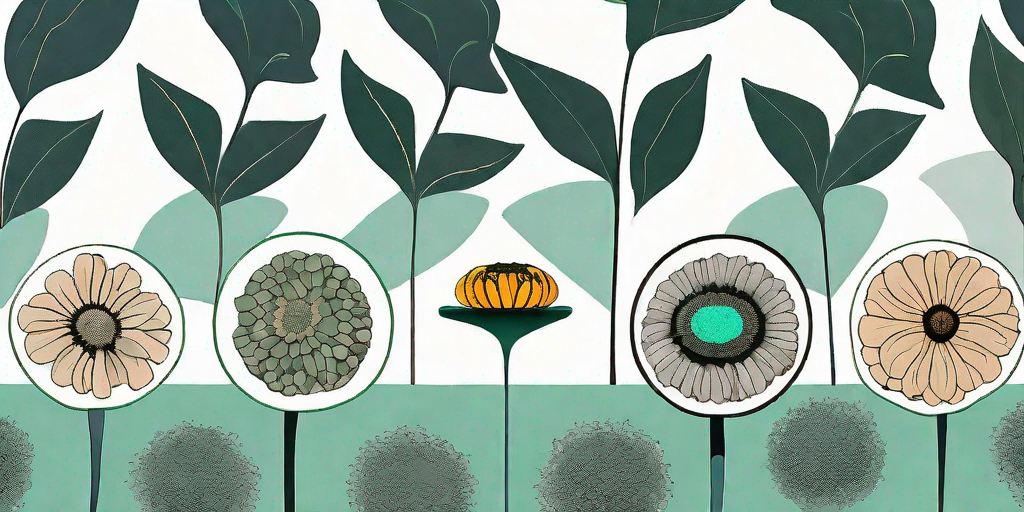
Let's embark on a thrilling journey into the world of zinnia seeds. These tiny packets of potential are more than just the precursors to your favorite summer blooms. They're the key to a garden filled with vibrant, colorful zinnias that can brighten even the gloomiest of days. But how can you tell a zinnia seed from, say, a sunflower seed or a poppy seed? Fear not, dear reader, for we are here to unveil the mystery with a visual guide that will turn you into a zinnia seed identifying whizz in no time.
The Basics of Zinnia Seeds
Before we delve into the nitty-gritty of identification, let's cover some basics. Zinnia seeds, like all seeds, are the offspring of their parent plant. They carry the genetic information needed to grow into a new plant. But unlike some seeds, zinnia seeds are not shy about showing off their unique characteristics. They're like the extroverts at a party, making it easier for us to identify them.
Typically, zinnia seeds are shaped like arrowheads or crescents, with a pointy end and a rounded end. They're usually a shade of brown, ranging from light tan to a deeper chocolate hue. But remember, nature loves to throw curveballs, so don't be surprised if you come across zinnia seeds that don't fit this exact description.
Size Matters
Zinnia seeds are not the smallest seeds in the garden, but they're not the largest either. They fall somewhere in the middle, typically measuring between 1/4 to 1/2 inch in length. This makes them easy to handle, especially if you're a gardening newbie still getting the hang of sowing seeds.
However, the size of zinnia seeds can vary depending on the variety of the plant. For instance, the seeds of the giant zinnia (Zinnia elegans) are larger than those of the creeping zinnia (Zinnia angustifolia). So, keep in mind that size can be a clue, but it's not the definitive factor in identifying zinnia seeds.
Identifying Zinnia Seeds: A Step-by-Step Guide
Now that we've covered the basics, let's get down to the fun part: identifying zinnia seeds. Grab your magnifying glass, put on your detective hat, and let's get started.
First, take a close look at the seed. Is it shaped like an arrowhead or a crescent? Does it have a pointy end and a rounded end? If the answer is yes, you might be holding a zinnia seed. But don't celebrate just yet. We've got more steps to go through.
Step 1: Examine the Color
Zinnia seeds are usually brown, but the exact shade can vary. Some seeds might be a light tan color, while others might be a deeper chocolate brown. If the seed you're examining falls within this color range, it's another clue that you might be dealing with a zinnia seed.
But remember, color alone is not enough to confirm the identity of the seed. Many seeds are brown, so we need to look at other characteristics as well.
Step 2: Check the Size
Next, take a look at the size of the seed. Is it between 1/4 to 1/2 inch in length? If so, it's another point in favor of the seed being a zinnia. But remember, size can vary depending on the variety of the plant, so this is just another clue, not a confirmation.
Now, if the seed you're examining is much smaller or much larger than this, it's probably not a zinnia seed. But don't be disheartened. The world of seeds is vast and fascinating, and there are many other types of seeds to explore.
Step 3: Feel the Texture
Zinnia seeds have a somewhat rough texture, thanks to the tiny hairs that cover their surface. These hairs are not visible to the naked eye, but you can feel them if you gently run your fingers over the seed. If the seed you're examining has this rough texture, it's another clue that it might be a zinnia seed.
However, keep in mind that many seeds have a rough texture, so this characteristic alone is not enough to confirm the identity of the seed. It's just another piece of the puzzle.
FAQs
Can zinnia seeds be other colors?
While most zinnia seeds are brown, they can sometimes be other colors. For instance, some varieties of zinnia produce black seeds. However, these are the exception rather than the rule.
What do zinnia seedlings look like?
Zinnia seedlings have oval leaves that are arranged opposite each other on the stem. The leaves are usually a bright green color, and the stem is often reddish.
How long do zinnia seeds take to germinate?
Zinnia seeds usually take between 5 to 7 days to germinate. However, this can vary depending on the conditions. For instance, if the soil is too cold, the seeds might take longer to germinate.
Conclusion
Identifying zinnia seeds can be a fun and rewarding activity, especially if you're a gardening enthusiast. By learning to identify these seeds, you can ensure that you're planting the right seeds in your garden and increase your chances of growing beautiful, vibrant zinnias.
So, the next time you find a mysterious seed in your garden, don't be quick to dismiss it. Instead, use the clues we've discussed in this guide to try and identify it. Who knows, you might just discover that you've got a handful of zinnia seeds ready to be sown.















